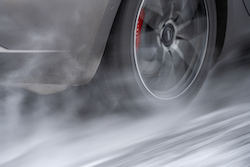It is not always easy to know which tires one should use during the winter season. There are a few misconceptions that have made it even more difficult to know and get it correct. Some of these are that you have the name snow tires and winter tires, you have all-season tires and all-weathertires, and you have M+S marking and a three-peak mountain snowflake (3PMSF) symbol that is approved for winter use. With all this, it is not so clear, and that is why we will try to make it a bit clearer.
Winter tires are tires that should be used during the winter season if you have low temperatures, below freezing, and you have snow and or ice. Snow tires are what they used to be called before, and now they have evolved into winter tires that can handle both snow and ice to make them perfect for the whole winter season. A winter tire should be approved for winter use and have the 3PMSF symbol indicating that they have passed some performance tests when it comes to snow. This means that they will perform very well in winter conditions. This is different from the M+S marking, which is a manufacturer marking that the tread is designed to handle mud and snow but doesn’t indicate how well they perform or that they have passed any performance tests.
This is why the M+S marking might fool people into believing that they will perform very well in winter conditions, but this is not always the case, and most often, it is not. They will perform much worse than tires that have passed performance tests and have the 3PMSF-marking.
Then you have the all-season tires, which are tires that can be used all the seasons except the winter season, so despite the name sounding like they would be an all year round tire, they are not for areas that include winter. They are basically summer tires. If you want the tires to handle also winter conditions, you will need an all-weather tire that has been approved for winter use. Then they can handle the winter conditions, and you don’t have to worry about the weather forecasts, as you are ready to drive regardless of the weather.
So regardless of what you have heard before or believe, you will need to have a winter approved tire for a tire to be safe during winter conditions. You can use dedicated winter tires that are only designed for winter use and should be paired with a pair of summer or all-season tires. You can also go for an all-weather tire that has been approved for winter use as these tires can handle all the different weather conditions and can be used all year round. So even though the names have been a bit confusing in the past, I hope that it is clearer now.
For more information regarding tires that are approved for winter use, visit: https://www.nokiantires.com/
